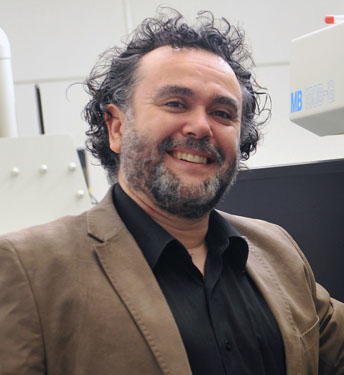49th Inorganic Discussion Weekend (IDW 2016)
November 11th - 13th, 2016
McMaster
University
Hamilton, Ontario, Canada

Program
The full program and summary of the program are available for donwload.
Only
a summary of the program will be printed and available at the conference.
If you need, please print your own complete copy or have it as a pdf file
on your electronic device.
We will provide lunch on Saturday, Nov. 12.
Social
Events
Mixer
Friday, November 11, 7:00-10:00 pm
Location: The Gown & Gavel pub in the Hamilton downtown. 24 Hess St. South, Hamilton, ON L8P 3M8. Map
Banquet
Saturday, November 12, 7:30-10:00 pm
Location:
The Dundas Valley Golf and Curling Club. 10 Woodleys
Ln, Dundas, ON L9H 6Y6. Map
There will be two busses (90 passengers in total) taking
the participants from McMaster University to the banquet.
The pick-up location is shown on the McMaster
map, and it will be north of the MDCL building.
At 7:15 pm, the busses will depart from McMaster to the Dundas Valley
Golf Club.
At 10:15 pm, the busses will take the participants from the Dundas Valley
Golf Club to the Hamilton downtown. The stop will be on the Bay St. South,
close to the Homewood Suites by Hilton.
By car:
From the parking lot, go back to the University Avenue by looping around
the hospital. Turn right onto the Main Street and exit right onto the
Cootes Drive. Continue straight on the Cootes Drive and then on the King
Street West (also Hwy 8), which takes you through the Dundas downtown.
Right after you leave Dundas and before you go under the railway bridge,
take the Woodleys Ln on your left.
Plenary lectures

Prof. Risto Laitinen
Laboratory
of Inorganic Chemistry, University of Oulu, Finland
Risto Laitinen received his Ph.D. in 1982 in Helsinki University of Technology (Finland). He joined University of Oulu (Finland) in 1988, first as Associate Professor of Inorganic and Analytical Chemistry, and since 1993 as Professor of Inorganic and Analytical Chemistry. He has served as Head of Chemistry Department in 1993-1999, 2003-2008, and 2010-2013. In 1984-1985 he was an Alexander von Humbold research fellow in Technische Universität Berlin (Germany). His research interests lie in synthetic, structural, and computational chemistry of sulfur, selenium, and tellurium. He has collaborated extensively with several research groups in different Canadian universities and is a constant visitor in Canada. He has long been involved in IUPAC (Member of Union Advisory Board 2004-2005, secretary, member, and national representative of Commission on Nomenclature of Inorganic Chemistry 1981-2001, and a titular member and secretary in Division of Chemical Nomenclature and Structure Representation 2015-).
Formation of Sulfur and Selenium Imides via Cyclocondensation and Cyclodimerization
The [2+2] cyclodimerization of chalcogen
diimides E(NR)2 (E = S, Se; R = alkyl, aryl) to form the
dimers RNE(μ-NR)2ENR is endergonic
for sulfur diimides, approximately energy-neutral
for selenium diimides, and spontaneous for tellurium
diimides. Although
the monomeric structure of Se(NAd)2 in the solid state has been established, selenium(IV) diimides undergo thermal decomposition
in solution to give a mixture of cyclic selenium imides. It has
recently been observed that Group 12 metal dichlorides assist the cyclodimerization
of Se(NtBu)2.
Once formed, the dimer is kinetically stable
due to a relatively high energy barrier towards dissociation.

Prof.
Frédéric-Georges Fontaine
Département
de Chimie, Université Laval, Canada
Frédéric-Georges Fontaine received his B.Sc. in Chemistry in 1998 and his Ph.D. in 2002 degree under the supervision of Prof. Davit Zargarian at University of Montreal. He did his postdoctoral research in the group of Prof. T. Don Tilley University of California, Berkeley. In 2004, Frédéric-Georges Fontaine joined Université Laval as a faculty member. In 2015, his research achievements maded to the top 10 discoveries in the Québec Science.
Ligand Design in Organometallic Chemistry Taken to the Extreme: when the Metal is no Longer Needed
By
fine tuning of the steric and electronic properties
of both partners in these "metal-free organometallic"
species, the same way organometallic chemists
design ligands for transition metals, it is possible to obtain catalytic
activities that are as good, and sometime better, than traditional transition
metal systems. This talk will detail the reactivity of ambiphilic molecules in the hydroboration
of carbon dioxide, hydrogenation of carbon dioxide, borylation
of heteroarenes6 and in dehydrogenative diboration of hydroboranes.
